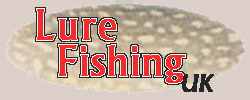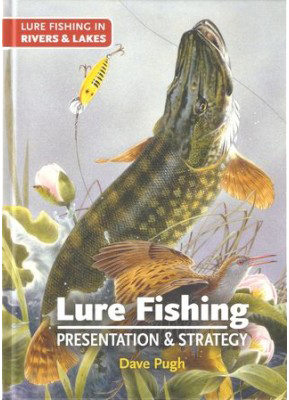
 Some time ago I decided that I'd like to write a book about lure fishing. I felt I had something to say that was rather different from the usual stuff that gets repeated and recycled endlessly. It comes down to experience, I've been fishing with lures for 25 years now, and during that time I've caught a lot of fish from various water types and in a huge variety of water conditions. Something that is plain to me from all that experience is that the majority of everything I've ever read about lure fishing is either irrelevant or misleading, and worst of all, totally unhelpful to someone who wants to catch a lot of fish with lures.
Some time ago I decided that I'd like to write a book about lure fishing. I felt I had something to say that was rather different from the usual stuff that gets repeated and recycled endlessly. It comes down to experience, I've been fishing with lures for 25 years now, and during that time I've caught a lot of fish from various water types and in a huge variety of water conditions. Something that is plain to me from all that experience is that the majority of everything I've ever read about lure fishing is either irrelevant or misleading, and worst of all, totally unhelpful to someone who wants to catch a lot of fish with lures.
There are two main threads of lure fishing that have to be woven together to create the fabric of success: the first is simply the ability to control lures, which involves not only the cast and the retrieve, but the choice of lure. The second is how you should go about applying that ability on the water to make sure you catch the maximum number of your target species. So the book, entitled: Lure Fishing � Presentation and Strategy, is in 2 sections, the first part covers Presentation, all the technical stuff that enables you to get the right lure in the right place. The second part is about the Strategy, selecting the right places, including searching for fish, catching loads when you've found them, and also getting the best from a hard day.
Alongside the main text there are over 100 colour photographs, all with informative captions that describe detailed examples within the general thread.
Everything in the book is drawn from experience, I've no daft theories about lures and fish, there is no lazy speculation about irrelevancies, it is just a practical guide to getting the most from your lures. It contains plenty of original information, important things that I've never seen written anywhere but that have made a big contribution to my success, the sort of things that really matter when you're out there on the water: I believe that information will be helpful to any other lure anglers seeking to improve their catches.
Lure Fishing Presentation and Strategy by Dave Pugh
ISBN 978 1 904784 64 7
Published and distributed by
Coch-y-Bonddu Books Ltd, Machynlleth, Powys SY20 8DG
01654 702837
www.anglebooks.com
2 Lure Control - Casting
Guidance on casting, this sounds very basic, but it is important.
3. Lure Control � Retrieving
Depth and speed control.
4. Lure Control � Structure
How lures can be chosen and controlled to take account of the shape of the river or lake bed.
5. Basic Tackle
Exactly that, some guidance on equipment. The same kit is not right for everyone.
6. Lure Types
A simplified description of lure behaviours. In terms of control, there are essentially only 3 types!
7. Lure Colour
Why it does, and does not, matter.
8. Good Lures
Things to consider about what makes a lure a good choice. Includes qualities like strength, durability, casting range and price.
10. Searching
New waters and your regular spots. Finding good places and numbers of fish.
11. Bagging Up
Making the most of the opportunity when you have found numbers of fish. Competing fish. Speed and depth.
12. Scratching
What to do when you cannot find numbers of fish. Extremes of speed. Concentration, determination and thoroughness.
13. Pike Specifically
Technical application: fishing for pike in weir pools, margins and weedbeds. Lures as tools. Precision and control.
14. Time Management
Planning, reacting to results, optimising time in best places.
15.Never Stop Learning.
Reading critically, choosing your fishing buddies, team ethos, protecting your best fishing, and getting your money's worth from guides.
December 2018
Book available direct from the publisher but there are only a few left.
Please email me if you have any questions.